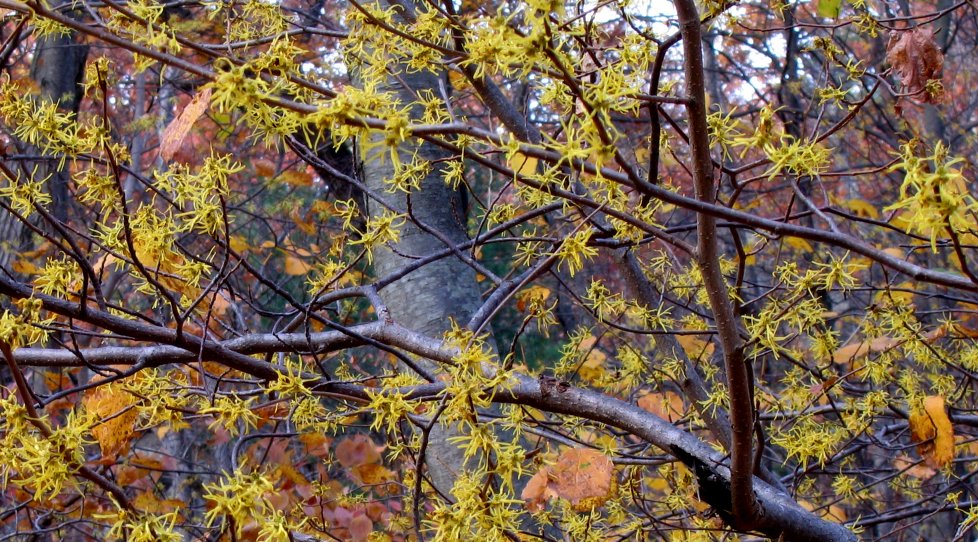
November 5, Blue Hills Reservation, Quincy
Flowering When Honey Is Harvested
Irina Kadis
In autumn, at the time when leaves of witch-hazel, Hamamelis virginiana are already turning yellow, its buds grow large and plump, getting ready for the annual performance. An oddball in New England hickory-oak forest—in fact in any forest—this large deciduous shrub goes into bloom while going dormant! Linnaeus gave it the name Hamamelis, whose two parts mean simultaneous with (hama-) and honey (-melis) in Greek—we believe highlighting the unusual time of the flowering, the time when honey is harvested.
The impossible flowering time has to do with witchcraft—this is one superficial way to explain the common name. There exists, however, a more sophisticated explanation: 'witch' comes from an Old English 'wych,' which further leads to 'wice' with the meaning 'bent' or 'flexible,' 'pliable'. This Indo-European root has made it in many languages. The Russian for 'branch' (vetv) and 'branchlet' (vetochka) originate from the same source. Even closer is a local word used in the Urals for 'branchlet': vitchka.
The reference to hazel in the common name is misleading. The similarity between which-hazel and hazel leaves and nuts is superficial. Witch-hazels are rather related to witch-alders (Fothergilla) and sweetgums (Liquidambar).
'Witch's hats' are aphid galls formed by Hormaphis hamamelis and found specifically (and rather frequently) on witch-hazel. Some prefer to believe that these pointed galls gave grounds for the plant's common name.
Witch-hazel is the largest shrub in the understory of New England deciduous forest. It can grow up to 5 meters tall, sometimes even taller, then producing a small single-trunk tree.
Its bright yellow flowers form small shaggy clusters; each flower is contributing its four narrow band-like petals to this hair-do. The petals can be as long as 2 centimeters, producing flowers of 4 centimeters in diameter. The narrow petals don't obstruct the view of the four-parted calyx. Calyx parts persist after flowering. Clusters of flowers are wrapped each in a three-parted firm involucre.
It takes a fruit as long as 8 months to develop: during the winter, spring, and the next summer,
so fruit of the current and previous year are normally seen together on the branches.
Ripe capsules burst with great force right about the time of flowering, in the fall,
launching their stout firm seed a few meters away!
Another common name for witch-hazel is snapping hazel.
In case someone is not enough amazed by this November-blooming, shooting plant, please consider other
Hamamelis species occurring around the globe, close and far from New England—all unusual in
their own ways. Another North American witch-hazel, Hamamelis vernalis very peculiarly starts its
flowering season in December and goes on all the way into spring. Called 'spring witch-hazel,' it very effectively reminds us during the least joyful season that the next spring is just around the corner.
23 October 2013
© I. Kadis. Photography A. Zinovjev. CC BY-NC-ND 3.0 license
salicicola.com
webmaster
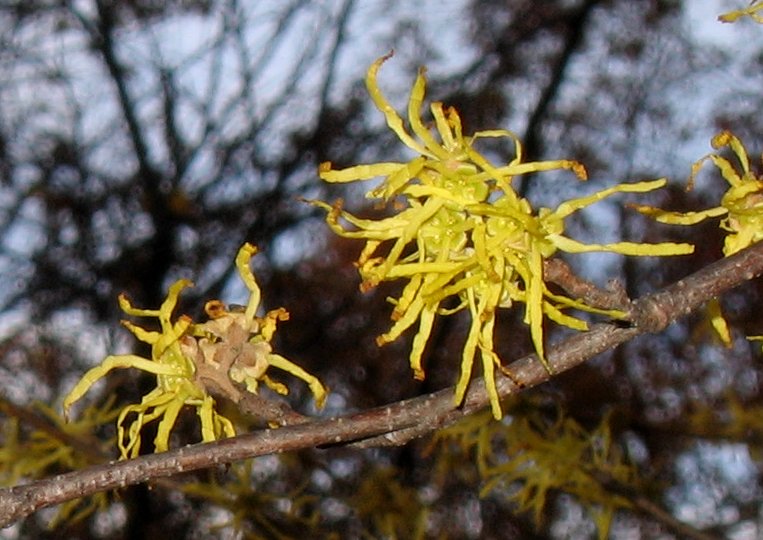
November 5, Blue Hills Reservation, Quincy
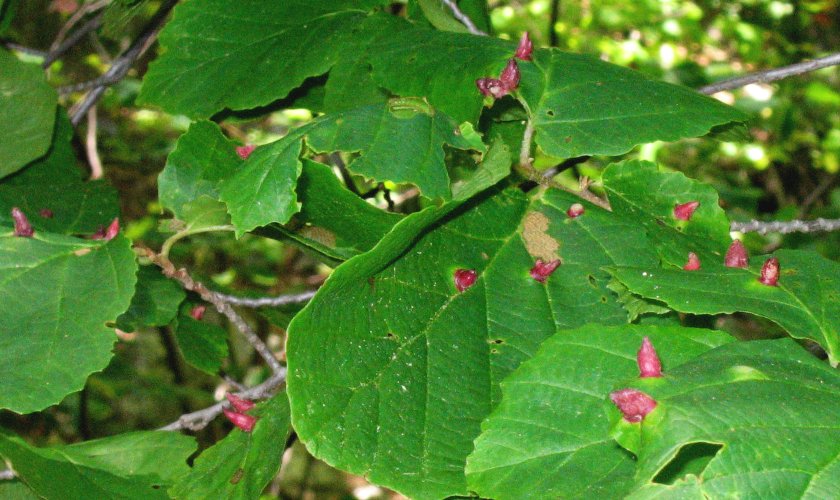
Aphid galls. July 4, Blue Hills Res., Milton
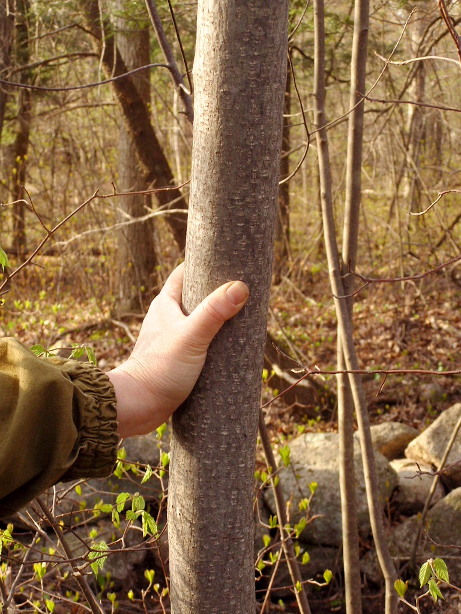
Growing as a tree. April 23, Ames Nowell SP, Brockton
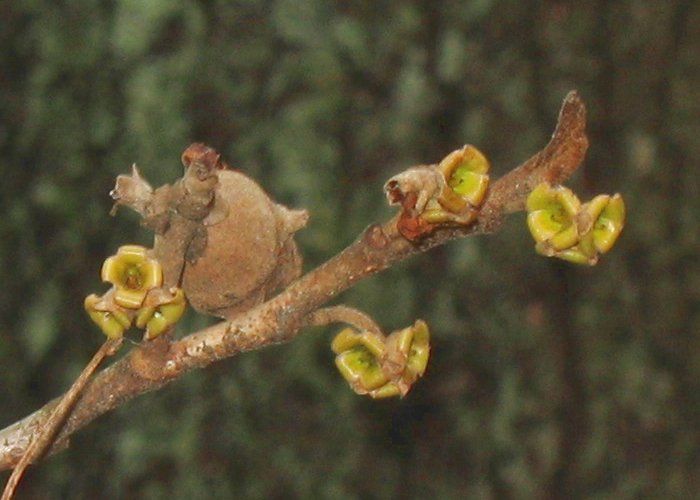
February 4, Blue Hills Reservation, Canton
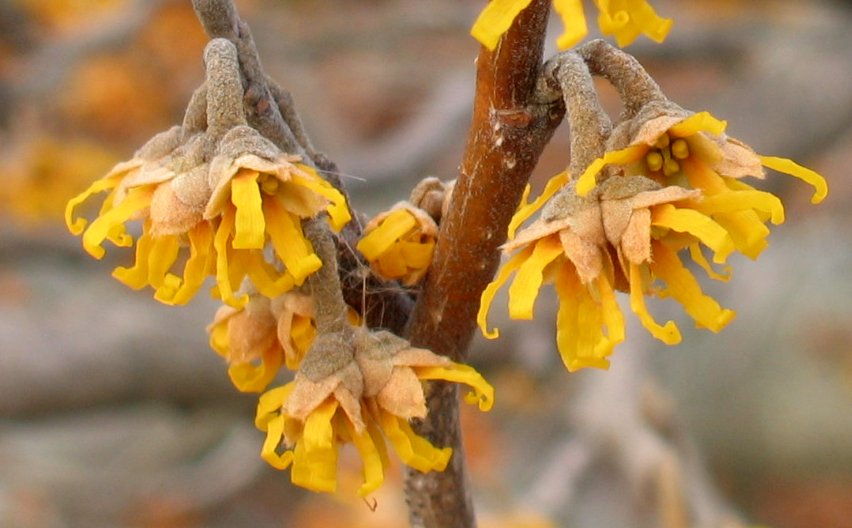
H. vernalis—February 4, Arnold Arboretum, Boston